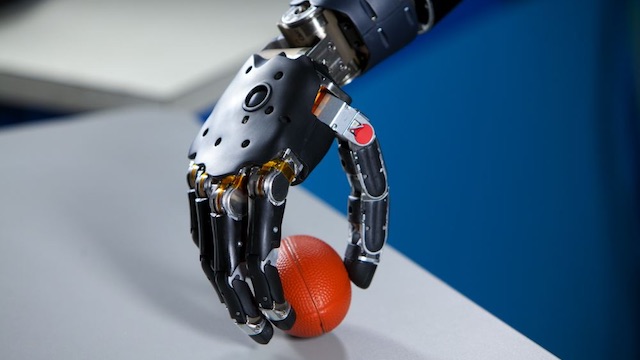
Researchers at Virginia Tech have developed a new way to integrate electronic sensors with personalized 3D-printed prosthetics. Scientists believe this technology could pave the way to creating more affordable electric-powered prosthetics, as well as aid in assorted other medical technologies.
The new design allows scientists to integrate electronic sensors directly into a prosthetic where it meets against the organic tissue. With the device placed in such a way, researchers can easily collect data to assess the comfort and function of the prosthetic. This allows them to make necessary adjustments to the device, as well as gather information to aid in the production of the next generation of prosthetics.
Scientists achieved this by forgoing traditional manual integration after printing for the integration of the materials, and instead opting for form-fitting regions of 3D-printed prosthetics via a conformal 3D printing technique. This allowed them to integrate sensors at various places throughout the interface for a comprehensive analysis of the prosthetic’s effectiveness and comfort. Additionally, this technology could help researchers to better match the texture and consistency of the human body in later versions of prosthetics.
Researchers took 3D scanning data of a prosthetics mold. With this data, they carefully inserted a series of sensors into cavity, with help from the conformal 3D printing technique. This allowed them to make an extremely form-fitting prosthetic that was minutely personalized to the wearer. As the user moved, sensors registered wear and pressure on the body tissue, gathering data so scientists could make even more comfortable prosthetics in the future.
“Personalizing and modifying the properties and functionalities of wearable system interfaces using 3D scanning and 3D printing opens the door to the design and manufacture of new technologies for human assistance and health care as well as examining fundamental questions associated with the function and comfort of wearable systems.”
Scientists believe the technology used in creating these new devices can have many applications in additional fields beyond the medical. For now, they are working on taking personalized prosthetics to the next level. They are also working on developing new techniques in additive manufacturing, which could significantly help manufacturers develop more advanced wearable bionic devices.
